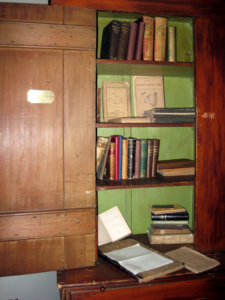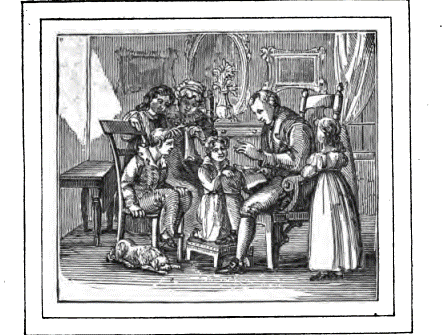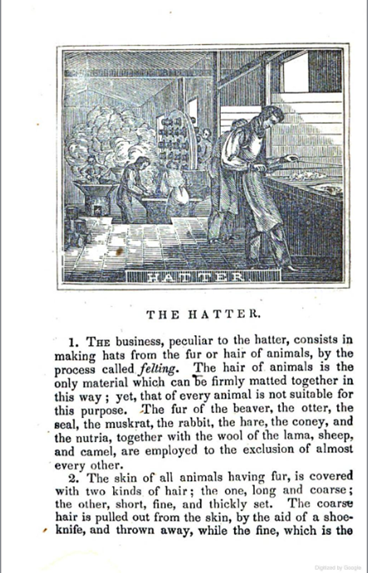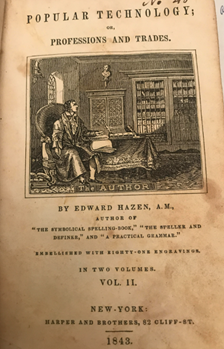Oct 1, 2024
As autumn settles in and children have returned to school, our volunteers have been busy preparing for Medfield Day, planning history-themed activities for children to learn about old and obsolete technology, specifically about tasks that can now be performed by apps in one’s cell phone.
Children starting school in 2024 will have career options that our foremothers and fathers could not have imagined. Today’s Medfield teachers, as in the past, will continue to prepare Medfield students to prosper in their own time, with its innovations and challenges, but this seems like the perfect opportunity to glance at how Medfield teachers of the distant past prepared their students for their careers.
 One of the lesser-known treasures at the Historical Society is a very small wooden cupboard with three shelves lined with books. This collection comprised the North School Library. Early Medfield had three school districts designated as North, Center, and South.
One of the lesser-known treasures at the Historical Society is a very small wooden cupboard with three shelves lined with books. This collection comprised the North School Library. Early Medfield had three school districts designated as North, Center, and South.
Back in the 1700-1800’s, Medfield was divided into three school districts: a north, a center and a south district. The first North School was built in 1732 and was located on North Street, just north of Dale Street. A new North Schoolhouse was built in 1761 at the corner of North and Harding Streets and was replaced in 1803. The 1803 school was taken away in 1849 and a new North Schoolhouse was erected further north at the corner of North and School Streets. This school was later called the Lowell Mason School and remained in use until 1920, when it closed. It was later destroyed by fire. This is the reason the street was called School Street. (Medfield Hometown Weekly)
This book cupboard is very portable, and probably dates from the school that was built in 1803 at North and Harding Streets, although it could have been used in the newer 1849 structure. Among its treasures, which include a very early edition of Stowe’s Uncle Tom’s Cabin along with other literary classics and textbooks on various subjects (some of which have penciled annotations from presumably bored students), is this curious volume: Popular Technology; or, Professions and Trades.(sic) by Edward Hazen, A.M., who also authored several other educational reference books, including The Speller and Definer (1830) and A Practical Grammar (1846). Hazen had a special interest in compiling descriptions, with detailed explanations, of “professions and trades” from which students could select according to their interests and abilities. He published a complete volume in 1837 called The Panorama of Professions and Trades, with the masculine subtitle “Everyman’s Book,” an alphabetically-ordered compendium of jobs from “agriculture” to “veterinary medicine.” For the sake of anyone who would like to view Medfield’s copy, please be aware that Hazen’s Panorama of 1837 was reprinted in two volumes, of which we have Volume 2 (1842) only. Both volumes, plus the Panorama version, are available without charge online at Google Books and Project Gutenberg.
When I was in school in the 1970s, I had guidance counselors to administer interest inventories, achievement tests, and other instruments of torture with the objective of helping me choose a career path. A popular self-help book was called What Color is Your Parachute? My mother actually bought me a book titled something like Aside from Teaching English, What Can You Do? (I taught English and loved it). In the 1840s, students could turn to Hazen’s books. In his preface is advice on how to begin the journey. Hazen writes that the book is intended for use by “schools and families, as well as for miscellaneous readers. . .it embraces a class of subjects in which every individual is deeply interested. . .and with which. . .he should become acquainted” (Hazen 1). The engraving shown as Figure 1 represents the ideal of adults teaching children about the job market.


In the preface, Hazen cautions readers that “many individuals mistake their appropriate calling, and engage in employments for which they have neither mental nor physical adaptation; some learn a trade who should have studied a profession; others study a profession who should have learned a trade. Hence arise, in a great measure, the ill success and discontent which so frequently attend the pursuits of men” (1).

Hazen adds that parents must take extreme care “ in the choice of permanent employment for their children,” which gives us a glimpse into the nature of early Victorian family life. Hazen reminds readers to control their “animal” natures in favor of reason and intellect.
Hazen’s book is enjoyable for history fans, who may access the entire book here, and would be of interest to high school history students doing independent research projects. Overall, we can see that Medfield students, and their parents, of the early 1800s had some of the same concerns then that they do in 2024.I can imagine that a book like Hazen’s was very popular; maybe so popular that Volume 1 was simply never returned to the North School library.
The individual professions, or “popular technologies,” are described and explained thoroughly, clearly and comprehensively. In choosing one example, I opted for “Hatter” from Volume 1, because we are in Medfield. See Figure 2 for the first page of “Hatter.” The complete chapter “Hatter” can be viewed at Google Books.
___________
Works Cited
Hazen, Edward A.M., Popular Technology or Professions and Trades, in Two Volumes, Embellished with Eighty-One Engravings, 1841. Philadelphia: Uriah Hunt.